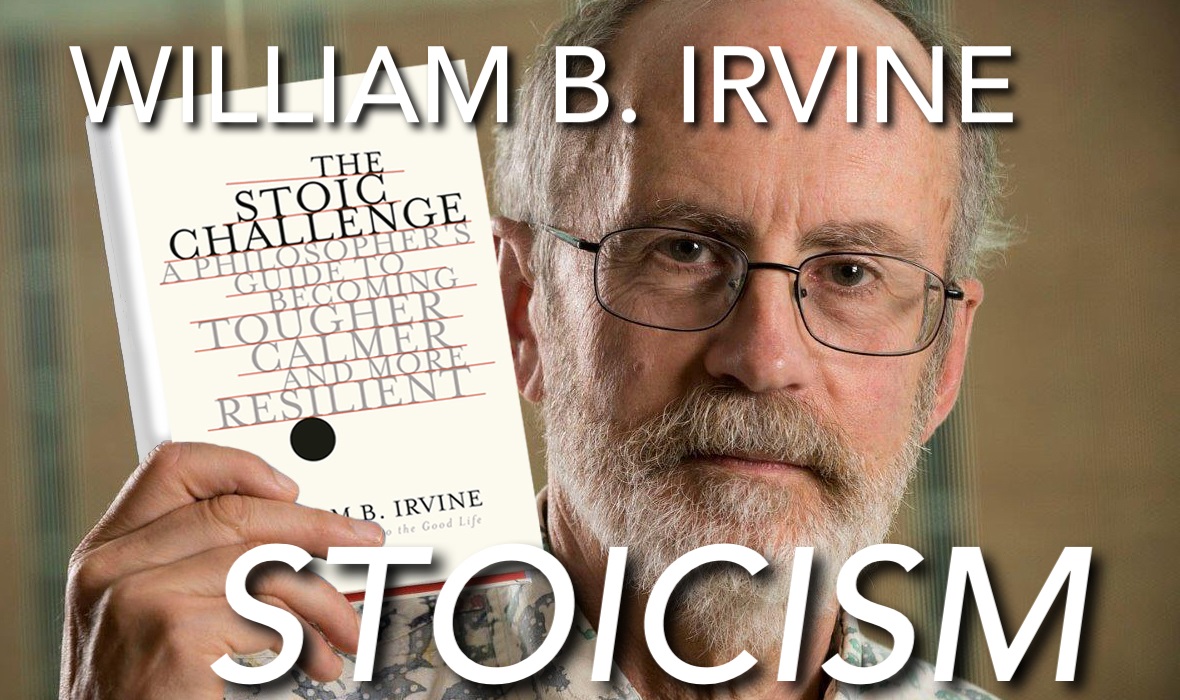Vill du läsa den här artikeln på svenska? Klicka här!
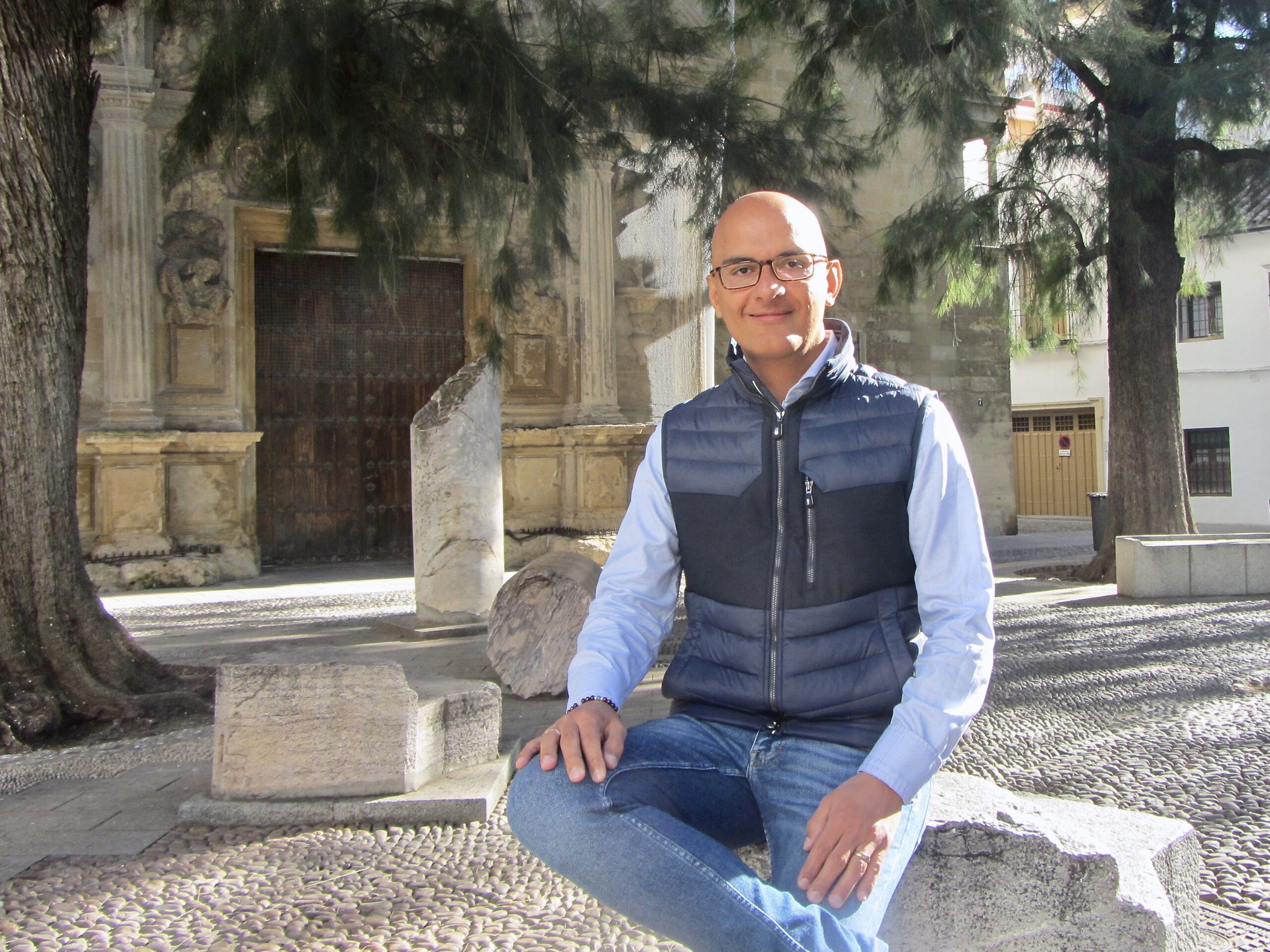
About Ashk Dahlén
Ashk Dahlén was born in Tafresh, Iran in 1972 and has lived most of his life in Sweden. He is Associate Professor in Iranian Languages at Uppsala University and his field of study covers Persian literature, Iranian history of religion and philosophy. Ashk Dahlén is the author of several books and articles on Iranian history and among his recent publications is Antikens Persien (2016).
Background
The Persian Empire ruled from about 550 BC, when Cyrus the Great liberated the Persians from the Medes to about 220 years later when Alexander the Great defeated Darius III and put an end to the era. Another name for the kingdom is the Achaemenid Empire since the Achaemenids was the ruling dynasty among the Persians. The Achaemenid epoch is best known for its great kings such as Cyrus, Darius, and Xerxes, famous battles against Greece and the building of Persepolis, nowadays a World Heritage Site. The empire was the greatest the world had seen, covering 5.5 million km2 and stretching from India and Central Asia in the east to the Balkans and Libya in the West.
The Persian Empire usually only get no more than a short mention in the chapter on ancient Greece in general history books. Why is it so?
– The Persian Empire has fallen into oblivion because most of its territory lay in Asia and the focus of Western historians has been on Europe, which is quite natural. The so-called Persian Wars was also a real turning point in the Greeks’ own history. When they began to write down their history, it coincided with their encounter with the Persians. Therefore, the history of the Greeks from the beginning concerned their relationship to the Persian Empire. From the perspective of Athens, the Persians were an enemy, at least politically. Western historians have therefore often started in Greece, which they perceived as the cradle of European culture and only touched upon the Persians when the Greeks were involved. Over time, the Persians were reduced to an “Eastern” enemy that the Greeks were fighting against. Nothing can be more misleading historically speaking.
– The perception that Greeks and Persians were enemies is simply wrong. The military conflict between them was short-lived and there were actually often more Greeks in the multi-ethnic Persian army than in the Greek army. Moreover, no unified Greece existed so for political and economic reasons many Greeks preferred to support the Persians instead of Athens. The Greek city-states that became part of the Persian Empire received, in addition to peace guarantees, access to a huge network of trade routes and an opportunity to extensive scientific and cultural exchanges. In this respect I think for instance of the achievements and innovations of the Middle East in the fields of technology, medicine, mathematics and astronomy. Last but not least, Athens was perceived as a foreign colonizer in the eyes of many Greeks. Since many historians hailed from or resided in Athens, its ideological perspective had nonetheless an enduring impact on Greek writings.
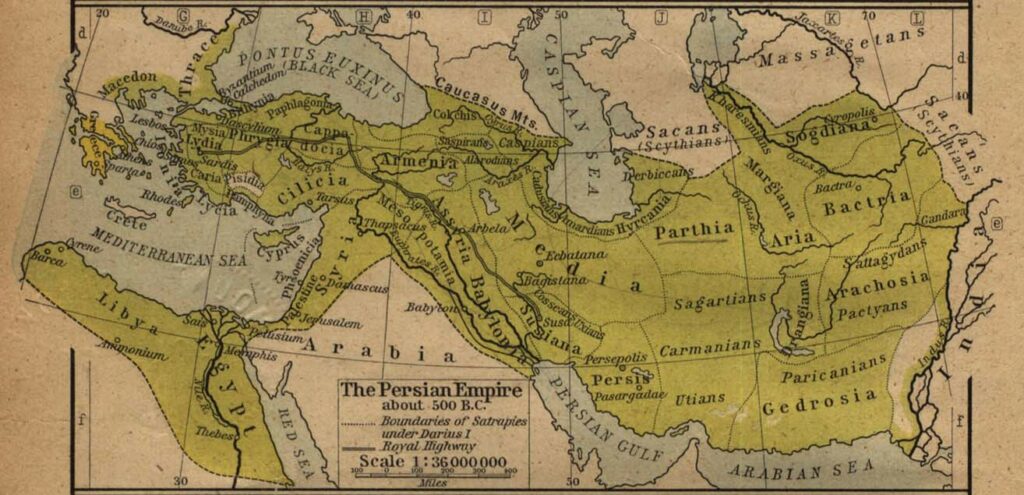
It has to be problematic to deal with such biased sources?
– Unfortunately the Persians have not left us any preserved history writing since they primarily transmitted their historical traditions orally. This resulted in history being mixed with myths and legends. In the 20th century, archaeologists in Iran discovered immense archives with economic and administrative texts from the Achaemenids that have provided important information on many matters we previously did not know. Not only have we learned much more about law, finance and governance in the empire, but also about its social, cultural and religious conditions. Since the 1980s, high-level research has focused on comparing these new sources with the Greek accounts. The main purpose has not been to generally falsify the reports of Herodotus and other Greek historians, but to re-examine their texts with critical eyes. New material from Babylon, Asia Minor, Bactria and Egypt continually contribute to new research findings offering a more nuanced picture of ancient Iran. Last but not least, some important information can be found in the Old Testament where the Persians are mentioned even though much of this material best can be described as fictional.
What in a few words are the most distinctive traits of the Persian Empire?
– If we start by looking at Cyrus the Great, he appears as a brilliant military commander and a highly pragmatic ruler. His policymaking was governed by political realism as well as humanistic ideals. Characteristically, he embraced everything in other cultures that he believed was useful and could contribute to generating effective governance and political cooperativeness. The Persians were initially pastoral nomads, lacked sophisticated urban culture and thus came to learn and inherit many traits of civilization from other peoples. They developed the Old Persian cuneiform under influence from the Elamites. They learned to mint coins from the Lydians and adopted the Median court life, royal costume and city planning. The Persian Empire was marked from the very beginning by cultural pluralism and, more importantly, a cosmopolitan vision of intercultural cooperation. Cyrus spared the lives of his defeated enemies, such as Astyages of Media, Nabonid of Babylon and Croesus of Lydia, and kept them as court advisors utilizing their political know-how and experience.

– After Cyrus, the most distinguished Persian is Darius the Great. He carried out a series of effective state reforms that rendered the empire its administrative solidity and political stability. Darius fortified the empire’s external borders and created peaceful conditions within its realms that lasted for almost two hundred years, commonly known as Pax Persica. This was no small achievement if we compare with, for example, Alexander whose empire fell apart immediately after his death. Darius separated the military and civil powers, instituted a royal law and introduced an international currency. But most importantly, he developed the so-called satrap system according to which each province was ruled by a satrap that often hailed from the local elite and was subordinate to the central government. The word satrap comes from the Old Persian xshathrapāvan that can be translated as “governor”. There was a high degree of self-governance in the satrapies, not least when it came to legislation and this, I believe, was the key to the territorial unity of the empire.
What languages were mainly spoken in such a multicultural empire covering such a vast territory?
– One might imagine that Old Persian was the dominant language, but it was not. Actually Aramaic functioned as a lingua franca or common language since many court scribes were Arameans. The Persian Empire was highly multilingual, and for instance Greek was adopted in Macedonia, Thrace and the western parts of Asia Minor, alongside Aramaic and Old Persian. Modern Persian is a continuation of Old Persian but you must be a linguist in order to understand it. An educated Iranian can understand single words or stylistic nuances in Old Persian, but no more. Most words have been modified or replaced such as the Old Persian baga (“god”) that has been substituted by khodā in Modern Persian. We encounter the old word much later in the Persian city name Baghdad, which means “the gift of God”. Old Persian ceased to exist a few hundred years after Alexander overthrew the last Achaemenid Darius III and it developed into Middle Persian, which is the direct precursor of contemporary Persian.
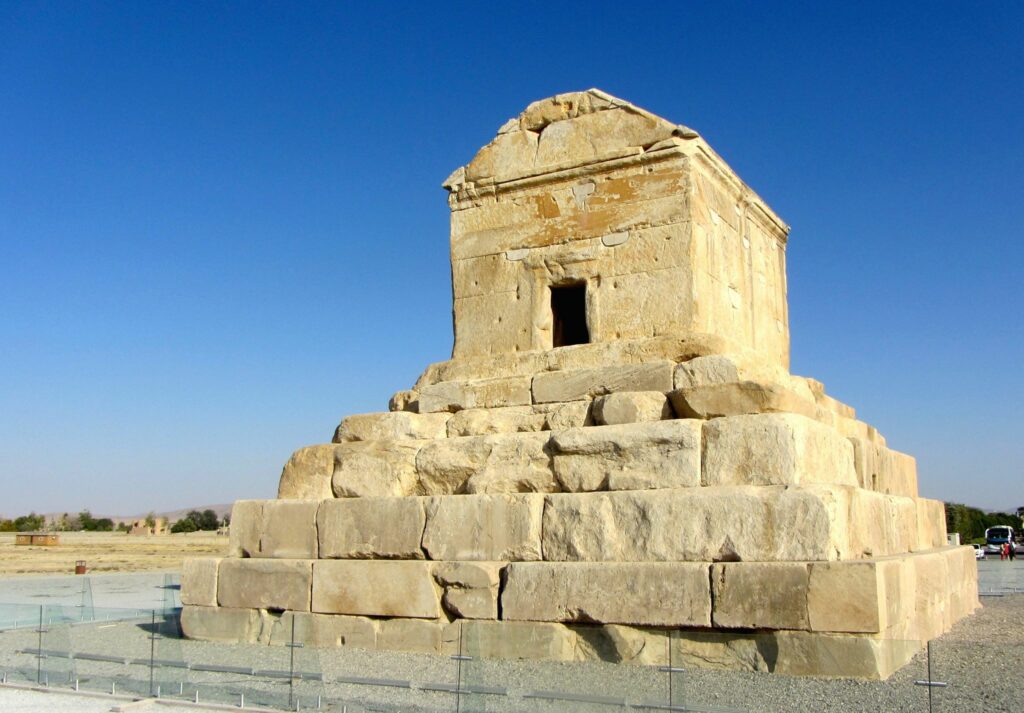
Was the empire as heterogeneous when it comes to religion?
– Yes, the same pluralism existed with regard to religions. The Iranian peoples had a rich variety of gods and religions or rather cults. They worshiped different gods for different purposes, much like in Old Norse religion. Typical for the Persians was that they adapted to other people’s religious customs and assimilated them into their own traditions. They were not afraid of losing their ethnic or religious identity, but on the contrary consciously created bridges between cultures and considered it natural to embrace valuable traditions from other peoples. A famous example is when Cyrus the Great’s son Cambyses conquered Egypt. He proclaimed himself Pharaoh, began worshiping Apis and donated gifts to the Egyptian temples. The cultural openness of the Persian elite testifies to a high degree of political realism, the realization that in order to rule a foreign territory one must adapt to its customs. But their fundamental attitude was rooted in ancient Iranian religious philosophy. They saw Ahura Mazda as the highest principle or spirit of worship. Ahura Mazda literally means “Majesty Wisdom” and his order or creation was therefore a “rational” one. This meant that the Persians were not hostile to other gods they came into contact with as long as the local rulers were loyal to Achaemenid royal power. When Xerxes the Great came to Asia Minor, he began to worship the goddess Artemis and he continued to do so after the Greek expedition.
What did the citizens of the Persian Empire have in common in terms of identity?
– It is quite natural that the inhabitants of such a large empire lived more or less isolated from each other, especially since the majority did not leave their own home territory. At the same time the Persian Empire united all regions from the Balkans and Libya in the west to India and Central Asia in the east for the first time. The cosmopolitan policies of the empire generated favourable conditions for international trade and also for social, cultural and scientific exchange. Different peoples began to mix with each other on a hitherto unseen scale through travel and mixed marriages. Greek artisans were brought to large building projects and served as mercenaries in the Persian army. When they returned to Greece, they brought with them new experiences and skills that were passed on to their society. As I mentioned, the legal system was designed differently in the various satrapies. The only thing that really determined whether a society was part of the Persian Empire or not was if the local ruler acknowledged the sovereignty of the Great King and collected tax and tribute to the central administration famous for keeping meticulous records at all levels.

Persepolis is the site that tells us most today about the Persian Empire. What do we know about the purpose of its construction?
– This is an issue that has been disputed for a long time. The Great King had four different capitals that he lived in during the various seasons. He sojourned in Persepolis in winter since it was the warmest region. Many scholars believe that Persepolis was built with the aim of exhibiting the unity and diversity of the empire in an architectural sense. All ethnic groups that were part of the empire are portrayed on the city’s palace walls, porticos, stairs, and bas-reliefs. The fact that the multicultural character of the empire was reflected in its monumental architecture was a deliberate policy. Persepolis bears witness to the cosmopolitan attitude of its rulers and incorporated artistic elements from the different cultures of the empire, particularly Media, Babylon, Egypt and Greece. The Fortification and Treasury Archives also proves that Persepolis was the administrative heart of the empire. When Alexander conquered the city, he burned down much of the constructions, especially the buildings erected by Xerxes. This can be explained by the fact that Xerxes invaded the Attic Peninsula and burned down Acropolis. Alexander did however spare the Palace of Darius the Great. With all its wealth and luxury Persepolis was a powerful symbol of the Achaemenids and maybe he felt compelled to destroy the city in order to assert himself as the new ruler of Iran.
– It is important to emphasize that there is relatively much preserved of Persepolis compared to other ancient ruins. In addition to the Palace of Darius many bas-reliefs and other sculptural art, such as double-animal capitals, has been preserved. Numerous art objects can be seen in museums in Chicago, Paris, Cambridge and Tehran. The damage caused by visitors did not end with Alexander and unfortunately it has continued all the way into modern times. For example, until very recently film recordings were made on the location causing destruction from actors and vehicles. During the Iranian Revolution, militant Islamists departed for Persepolis with bulldozers with the aim of demolishing the ancient site. Local inhabitants prevented them and in 1979 UNESCO named it as a World Heritage Site.
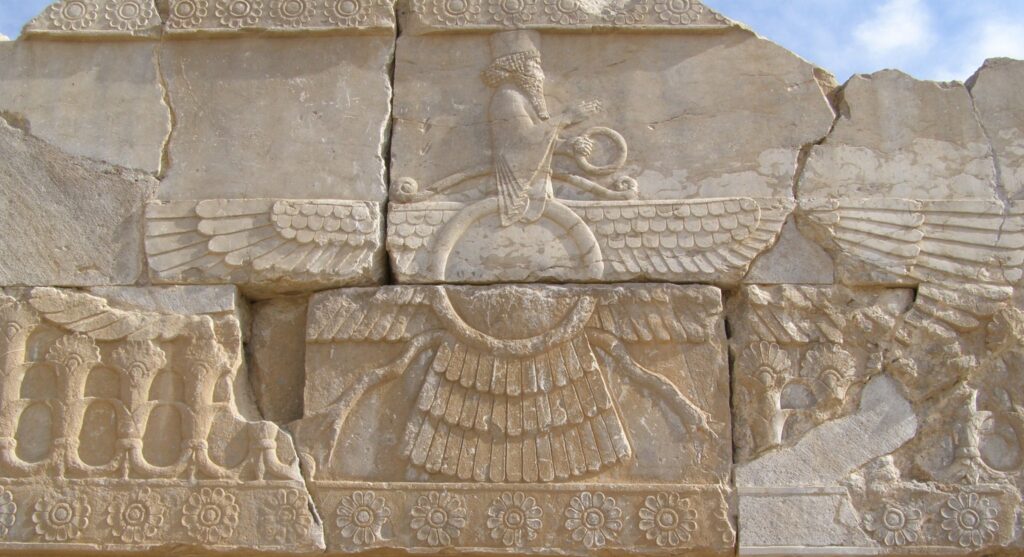
So the symbols from the Persian Empire have come to play a role in modern Iranian politics?
– Yes, many Iranians in the diaspora as well as in Iran have come to see the Persian Empire as a symbol of “genuine” Persian culture. For example, the Farvahar, the tomb of Cyrus and the Cyrus Cylinder are all used as motifs on necklaces, t-shirts, tattoos, etc. They have become powerful expressions of a contemporary national identity, sometimes in opposition to Iran’s Islamic heritage. As such they are also embraced and abused by ultra-nationalists who want to create a divided society based on ethnical purism. This is very regrettable not least because Iran has a small Arab minority that is as much Iranian as the country’s other citizens. Before the revolution, the Iranian state was very proud of the Persian Empire and school children were taught about the glorious achievements of the Achaemenids. The Shah of Iran evoked this historical period in his imperial ideology and portrayed himself as a successor to Cyrus and Darius. Today, Iranians are better informed generally about their ancient past and the Persian Empire is increasingly present in popular art, literature and music as well as festivals, movies and TV shows.
Which are the major trends and challenges in contemporary research on the Persian Empire?
– Today there is a lot of focus on philological and iconographic analysis of archaeological findings, such as reliefs, seals and cuneiform tablets. New cultural artefacts are being excavated in various parts of the Persian Empire, especially present-day Turkey, Central Asia and Afghanistan. In my view the most exciting research is currently made up of interdisciplinary studies combining knowledge from archaeology, history, linguistics, https://midwesthealthcareservices.com/zovirax-over-the-counter/ numismatics, and historical geography. There are few fields of research that involve researchers from so many different disciplines and cover so many different types of written and material sources as Achaemenid Studies. We are still working on the Greek texts but they have lost their central importance. The attention has shifted to material culture and textual sources from Babylon, Bactria and Persia itself. This transformation has given rise to new perspectives and filled gaps in our knowledge about societal developments, the everyday life of ordinary people and the position of women in the Persian Empire.
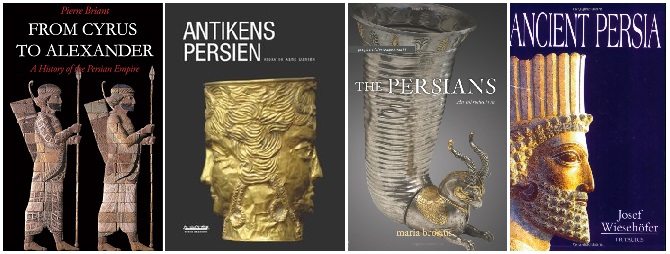
Do you have any recommendations for our readers who want to learn more about the subject? Is your book Antikens Persien a good start?
– Yes, it is aimed as an introduction for anyone who wants to discover more about this vital period of Iran’s history. At the end of the book I have provided an extensive list of secondary literature for those who wants to read more. I want to recommend Maria Brosius’ The Persians and Josef Wiesehöfer’s Ancient Persia that one can find in larger Internet bookstores. They are both very informative and easy to digest. And then there is of course Pierre Briant’s tour de force A History of The Persian Empire covering almost everything related to the Achaemenids on 1200 pages. In addition, there exists a number of exhibition catalogues with unique material that make it easier to connect to the Persian Empire and presents a vivid picture of how its citizens lived in everyday life.
Any final words to end the interview?
– I want to emphasize that the Persian Empire was not just multi-ethnic but a truly cosmopolitan and inclusive world power. The Achaemenid elite realized that all peoples and cultures had valuable contributions to give to the development of human society, or in Old Iranian terms, the renovation of existence (frashōkereti, “making excellent”). I find it interesting when we study contemporary discussions on, for example, the future of the European Union, and theories and policies on European integration, that there are lessons to learn from history. We see that ultranationalists, in dealing with difference and diversity within their own changing societies, reject transnational cooperation and fight any form of multiculturalism. In this situation we should remind ourselves that globalization was as real for the ancients as it is for us today. The Achaemenids were the first to operate and interact among peoples on a truly international level and their contributions to the evolution of human civilization is a reminder that humanity always has benefited immensely from transnational interaction and collaboration in the spheres of culture, economics, science, technology, and philosophy.
If you found this article interesting, you should probably also check these out:
